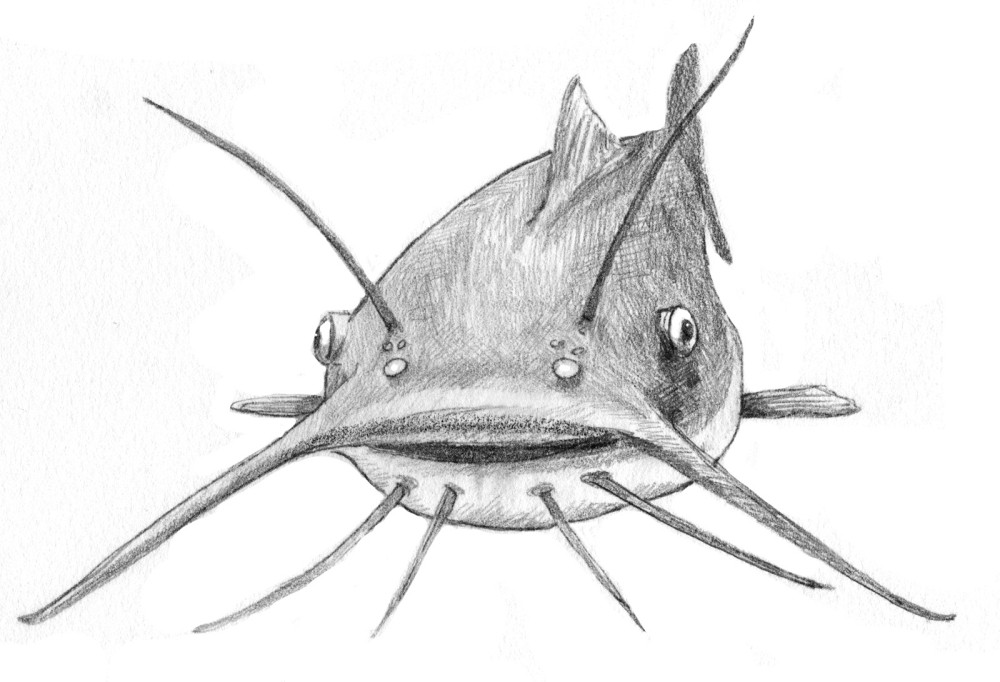
Consider for a second a fish that can live in turbid, low-oxygen water. Can breathe through its skin. Eats almost anything. Has a wickedly effective defense mechanism. And is a really focused parent. Plus, it’s good to eat.
We’re talking about the humble hornpout. Or “horned pout,” if you prefer. Or “mud cat.” Taxonomically, Ameiurus nebulosus. The brown bullhead.
Unlike imported rainbow trout, landlocked salmon, and largemouth bass, the hornpout is “a true New Hampshire native and one of the most common and widespread fish in the state,” said John Viar, a fisheries biologist with New Hampshire Fish and Game and a fan of hornpout – especially when they’re fried.
The hornpout is a catfish that ranges from near the Hudson Bay in the north to the Gulf of Mexico in the south and from the Atlantic coast westward into the nation’s midsection. The fish can be found in even more places thanks to stocking. It lives on the bottoms of lakes, ponds, and slow-moving streams. It comes out at night to feed, vacuuming up worms, fish and fish eggs, insects, leeches, plants, crustaceans, frogs – you name it. Hornpouts find prey by taste-smell using their hypersensitive barbels, or “whiskers.”
Tiny hornpouts are food for other fish. Adults have few predators thanks to the three venomous spines on their pectoral and dorsal fins. When deployed, the spines can do some serious damage, as any angler who treats the hornpout cavalierly can tell you.
Hornpouts are survivors – “the toughest of the tough,” in Viar’s words. They can live in warm, low-oxygen waters where other species would turn belly up, and they “can even take oxygen through the skin when necessary,” Viar said. Some Vermont towns experimented with using them in wastewater-treatment lagoons to reduce sludge levels. It worked, but when the sludge burped ammonia in the spring warmup, the fish usually didn’t make it through.
The nickname hornpout probably comes from a combination of the fish’s “horns,” or spines, and the Middle English pout, a word applied to several species of bottom-dwelling fish with broad heads that inhabit the oceans off of Western Europe. Viar also noted that, when they’re pulled from the water, the fish make a pouting sound with their swim bladders.
These days, the hornpout doesn’t have the angling allure of trout or bass or salmon. But that hasn’t always been so; they were so popular with anglers decades ago that New Hampshire Fish and Game “even transplanted them into the few waters that did not contain them, or to bolster existing populations,” said Viar.
For many of the French Canadian workers in New Hampshire’s mills, “the only fishing they knew (or cared for) was Friday and Saturday night ‘butt butt,’ also local slang for the species,” said Viar. “It was both a social and literal food-gathering event.”
That’s probably how hornpout became a verb: “hornpoutin’.” This involved groups of friends and anglers’ gathering in the dark on the banks of a pond or stream, using simple fishing poles baited with night crawlers or chicken liver or secret-recipe dough bait. “Kind of like a mini-campfire-slash-camping adventure, except with the additional fun of fishing and an excellent-eating fish harvest. Adult beverages may also be involved,” said Viar, who like his dad, has fond childhood memories of hornpoutin'.
It’s hard to say why the hornpout fell from grace. Maybe it’s a general aversion to “bottom feeders.” Or maybe it’s because hornpoutin’ is a nighttime activity. Or because they don’t get very big: seven to eleven inches is about average – the New Hampshire state record is just shy of 18 inches. Or maybe it’s that you have to be careful when handling them.
Anglers say hornpouts are scrappy little fighters: they can be crafty, taking their time closing down on a baited hook. Gastronomes rave about the succulence of the flesh, particularly that of fish pulled from clean, clear waters. Viar is one of them. “Fantastic eating,” he said. “In fact, those that have pan-fried skinned ’pout often note it is the best freshwater fish they have ever tasted.”
And you can catch a lot of them. Most states have generous limits: In New Hampshire, the limit is 25 fish per 24-hour period. No weight or length limits; no closed season.
Viar finds many things about the species fascinating – among them, the fact that “they are the most devoted parents in the fish world.” Both mom and pop hornpout guard their eggs and the fry after they hatch. “Watching two adult bullheads ‘herd’ the ‘charcoal’ fry school along is a sight I have been lucky enough to encounter many times in early summer.”


Discussion *